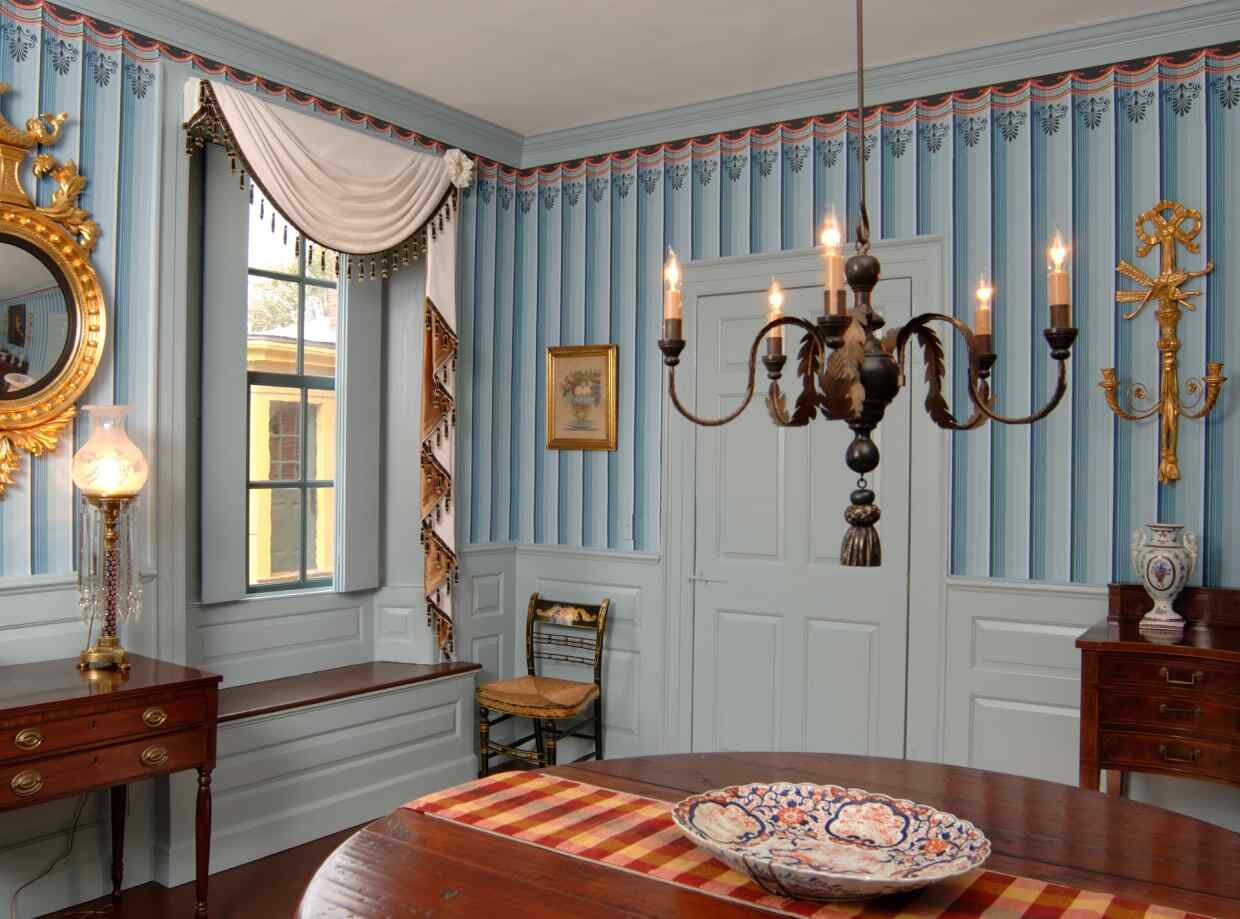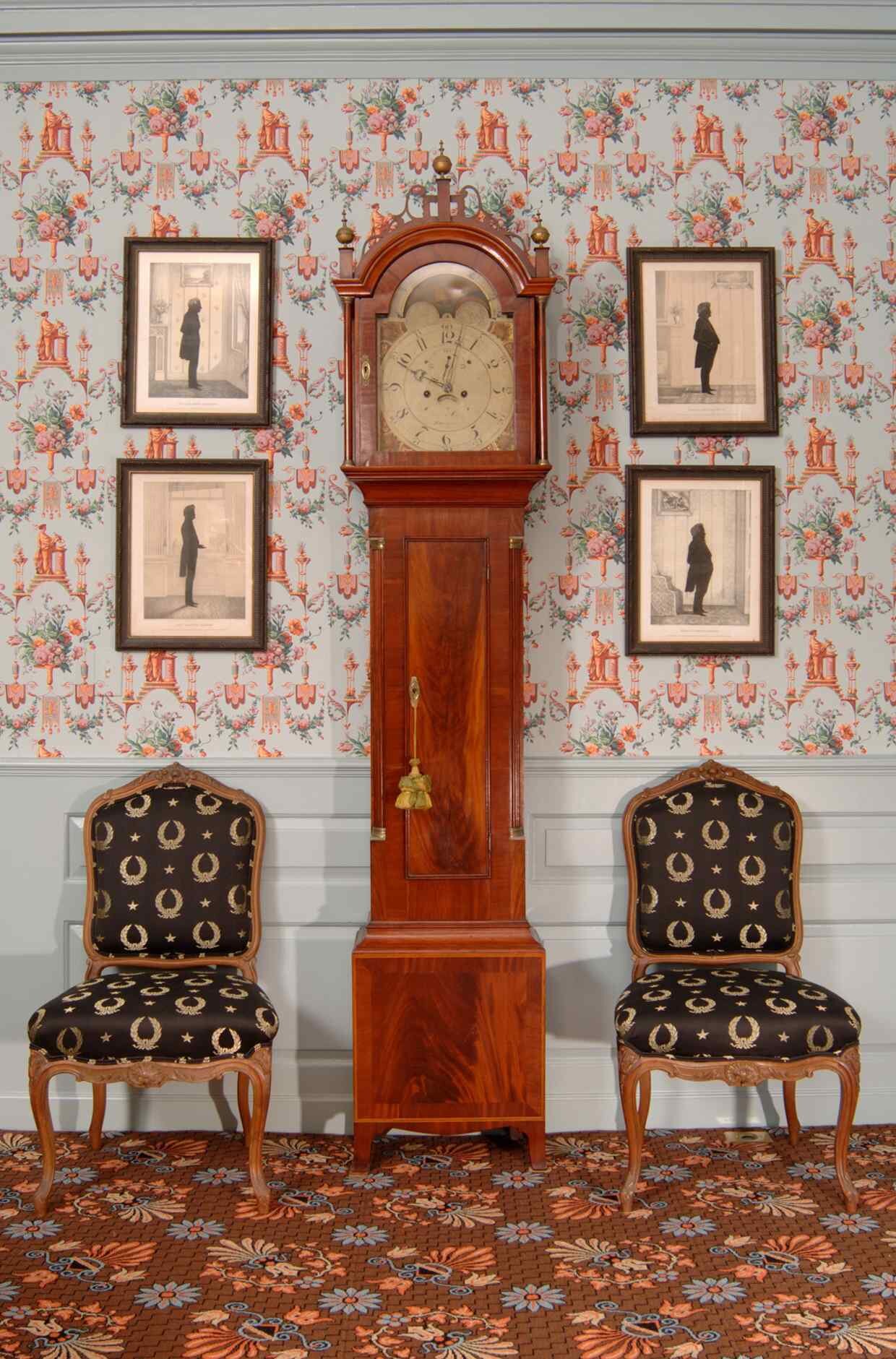Hand-printed wallpaper wonders: Adelphi
Custom block-printed hangings with heritage clout, from an artisanal studio
Traditional block-printed wallpaper can be tricky to track down. So difficult, in fact, that the Sir John Soane’s Museum Foundation recently sought the expertise of Adelphi Paper Hangings – a small studio in upstate New York – to assist with the renovation of the London apartments belonging to the neo-classical architect John Soane.
Since around 1840, machine-printed paper has become the norm, but there are several artisanal producers such as Adelphi who remain dedicated to the labour-intensive craft of block-printing wallpaper by hand. “Ours is a very immediate and deliberate way of working,” explains co-founder Steve Larson. “It is physically demanding and the end result is by no means slick. Our papers have variations – imperfections even – that let you know it is a handmade product.”
While Adelphi has built a strong reputation based on its work for museums and historical institutions such as Wordsworth House in the Lake District, and a restoration of James Madison’s Montpelier in Virginia, the firm works increasingly with private clients and noted designers such as Thomas Jayne and Nina Campbell on a variety of projects both large and small (such as those pictured). Often starting with historical documents or swatches of antique wallpapers, Adelphi sets about matching colours and replicating prints – many of which are hundreds of years old and are incredibly complex. In the case of the Soane Museum, where the original paper could not be removed from the walls in London, high-resolution photographs are used as the basis for authentic reproduction.
Private commissions generally take three to six months, depending on the complexity of the pattern and the number of colours involved, and a minimum order of three, 10m rolls is required ($380 to $945) though most clients opt for 12 to 20 rolls per room. After draft patterns are created for approval, custom-made, cross-banded, pearwood-faced blocks are created, distemper paints are mixed and test prints are made for client approval. It is only after these processes that prints are physically pressed onto either seamed or continuous rolls of acid free, 75 per cent cotton-fibre paper that closely mimic the texture and weight of the paper that was typically used in the 18th and early 19th century for block-printing.
For those who seek inspiration and don’t have a specific commission in mind, Adelphi has a significant archive of American, French and English patterns and wallpapers to choose from, and also offers licensed prints from Historic New England, The Smithsonian Institution, The Colonial Williamsburg Foundation, Old Sturbridge Village, the New York State Historical Association, the Musée du Papier Peint, as well as from other historic institutions and private collections on both sides of the Atlantic. For those wanting a more contemporary feel, Adelphi can also create graphic patterns and subtle hues – think beiges and subdued greys – that work well in a variety of more modern spaces.
“There are a few of us who are still making paper this way,” says Larson, “but for the most part, wallpaper is digitally printed and it just lacks some of the depth and character of the handmade version – it’s like looking at a photograph of wallpaper.”
Adelphi Paper Hangings’ use of traditional tools, methods and materials yields richly textured, nuanced wallpapers that are, quite simply, in a league of their own.


